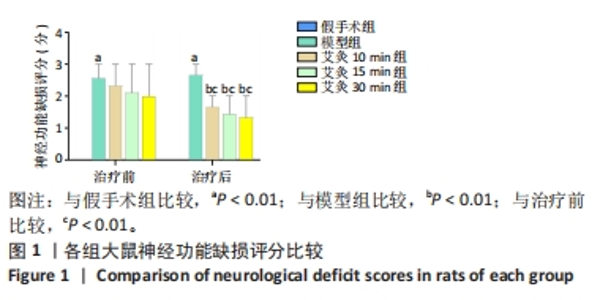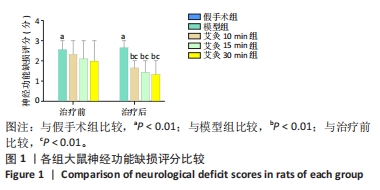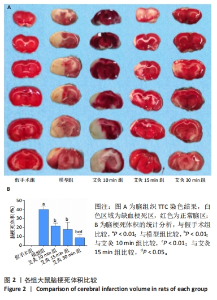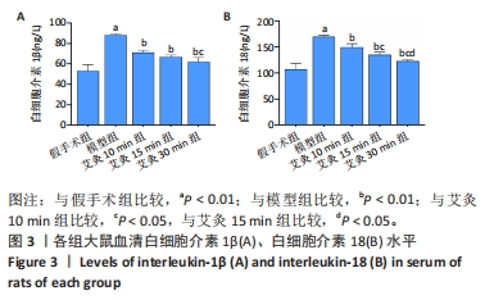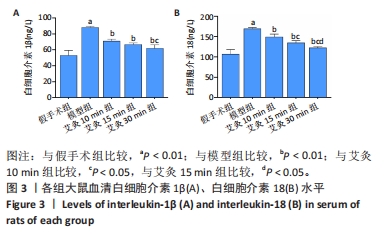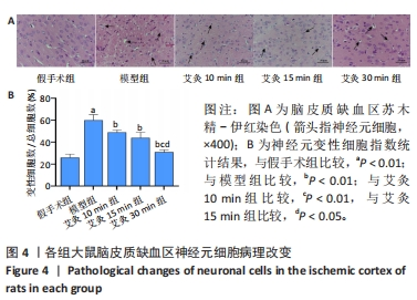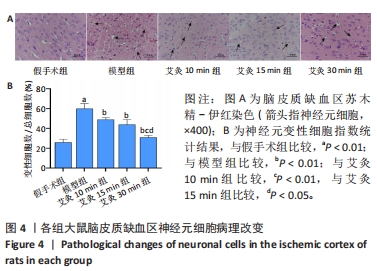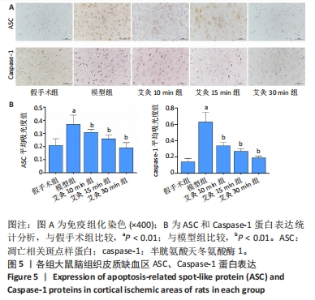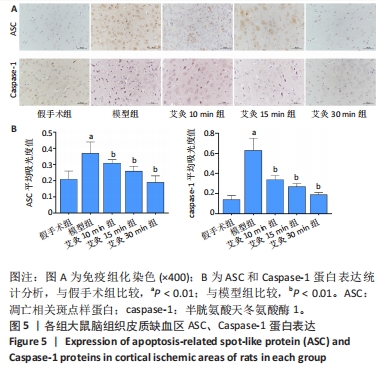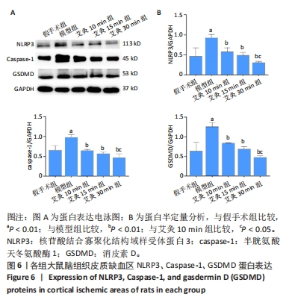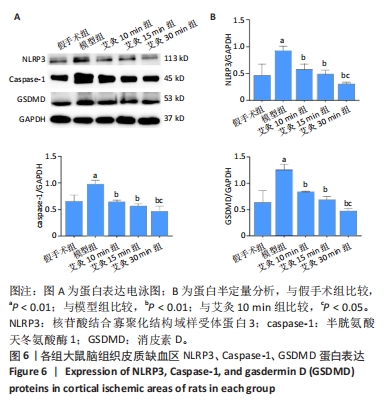[1] LIU J, ZHENG L, CHENG Y, et al. Trends in Outcomes of Patients With Ischemic Stroke Treated Between 2002 and 2016: Insights From a Chinese Cohort. Circ Cardiovasc Qual Outcomes. 2019;12(12): e005610.
[2] GORELICK PB. The global burden of stroke: persistent and disabling. Lancet Neurol. 2019;18(5):417-418.
[3] 刘佩佩,赵清,苑士龙.缺血性脑卒中复发的危险因素分析及预测模型构建[J].中国医刊,2023,58(5):545-548.
[4] KAUW F, BENNINK E, DE JONG HWAM, et al. Intracranial cerebrospinal fluid volume as apredictor of malignant middle cerebral arteryinfarction. Stroke. 2019;50(6):1437-1443.
[5] PATEL AMR, APAIJAI N, CHATTIPAKORN N, et al. The Protective and Reparative Role of Colony-Stimulating Factors in the Brain with Cerebral Ischemia/Reperfusion Injury. Neuroendocrinology. 2021;111(11): 1029-1065.
[6] MCKENZIE BA, DIXIT VM, POWER C. Fiery Cell Death: Pyroptosis in the Central Nervous System. Trends Neurosci. 2020;43(1):55-73.
[7] LYU JX, XIE D, BHATIA TN, et al. Microglial/Macrophage polarization and function in brain injury and repair after stroke. CNS Neurosci Ther. 2021;27(5):515-527.
[8] QU XY, ZHANG YM, TAO LN, et al. XingNaoJing injections protect against cerebral ischemia/reperfusion injury and alleviate blood-brain barrier disruption in rats, through an underlying mechanism of NLRP3 inflammasomes suppression. Chin J Nat Med. 2019;17(7):498-505.
[9] HU J, ZENG C, WEI J, et al. The comination of Panax ginseng and Angelica sinensis alleviates ischemia brain injury by suppressing NLRP3 inflammasome activation and microglial pyroptosis. Phttomedicine. 2020;76:153251.
[10] 贺丹妮,张小卿.针刺治疗脑缺血再灌注损伤机制研究[J].中医药临床杂志,2019,31(7):1199-1204.
[11] 黄丹丹,黄昌燕,张文平.热敏灸抗凋亡减轻脑缺血再灌注损伤[J].赣南医学院学报,2021,41(3):225-229,234.
[12] 郑桂芝,梁汝庆,郑灿磊,等.艾灸对脑缺血-再灌注损伤大鼠MMP-9表达的影响[J].济宁医学院学报,2017,40(6):402-406.
[13] 李超,朱才丰,王雪伟.艾灸督脉组穴治疗卒中后认知障碍的临床研究[J].针灸临床杂志,2022,38(4):27-32.
[14] 陈巧风.艾灸联合护理程序干预对脑卒中患者吞咽困难症状康复的影响[J].新乡医学院学报,2020,37(3):291-295.
[15] 宫政,李菲,陈松美,等.艾灸督脉治疗脑梗死恢复期临床疗效观察[J].上海中医药大学学报,2023,37(2):35-40.
[16] 蒋洁,赵百孝,陈立彬,等.灸法预处理脑缺血再灌注模型大鼠自噬及NLRP3炎症小体的表达[J].中国组织工程研究,2022,26(23): 3615-3619.
[17] 王春艳,武连文.构建大鼠脑缺血再灌注损伤模型的方法[J].吉林医药学院学报,2016,37(4):284-285.
[18] LONGA EZ, WEINSTEIN PR, CARLSON S, et al. Reversible middle cerebral artery occlusion without craniectomy in rats. Stroke. 1989; 20(1):84-91.
[19] 武曼丽,王瑶,黄阳雪,等.《肘后备急方》中风急症诊疗思想[J].中医药导报,2021,27(4):219-221.
[20] 邱慧琴.艾灸联合认知康复训练对脑卒中患者认知功能及日常生活能力的影响[J].新中医,2022,54(18):150-154.
[21] 李秀坤,刘旭光,杨慎峭.HO-1蛋白介导艾灸预处理改善大鼠脑缺血再灌注损伤机制的初步研究[J].中国中医基础医学杂志,2016, 22(7):918-921.
[22] 关艾明,海英.探析百会穴在中风病后遗症中的临床作用[J].按摩与康复医学,2022,13(4):74-76,80.
[23] 王亚飞,曹利超,柳佳彤,等.基于数据挖掘分析百会、大椎穴的临床应用[J].山东中医杂志,2018,37(3):216-219.
[24] WANG HL, LIU FL, LI RQ, et al. Electroacupuncture improves learning and memory functions in a rat cerebral ischemia/reperfusion injury model through PI3K/Akt signaling pathway activation. Neural Regen Res. 2021;16(6):1011-1016.
[25] 童勤思,尤敏,王颖,等.督脉灸治疗脑卒中后上肢痉挛临床观察[J].中医药临床杂志,2023,35(7):1399-1403.
[26] 文怡川,蔡业峰,招远祺.针刺百会穴对急性缺血性卒中患者大脑中动脉血流即时效应的影响[J].现代医药卫生,2013,29(23):3528-3529,3532.
[27] 杨杨. 针刺对脑缺血再灌注损伤大鼠行为学及神经血管再生机制的研究[D].北京:北京协和医学院,2016.
[28] 肖爱娇,罗小泉.艾灸对脑缺血再灌注损伤模型大鼠大脑皮质NF-κB p65蛋白表达的影响[J].中华中医药杂志,2013,28(12):3532-3535.
[29] CAO X, WANG Y, GAO L. CHRFAM7A Overexpression Attenuates Cerebral Ischemia-Reperfusion Injury via Inhibiting Microglia Pyroptosis Mediated by the NLRP3/Caspase-1 pathway. Inflammation. 2021; 44(3):1023-1034.
[30] ZHANG D, QIAN J, ZHANG P, et al. Gasdermin D serves as a key executioner of pyroptosis in experimental cerebral ischemia and reperfusion model both in vivo and in vitro. Neurosci Res. 2019;97(6): 645-660.
[31] FANG Y, GAO S, WANG X, et al. Programmed Cell Deaths and Potential Crosstalk With Blood-Brain Barrier Dysfunction After Hemorrhagic Stroke. Front Cell Neurosci. 2020:14:68.
[32] 王强,王玥.电针内关、百会通过NLRP3/ASC/Caspase-1通路干预局灶性脑缺血再灌注损伤大鼠的作用研究[J].湖南中医药大学学报,2022,42(8):1335-1340.
[33] 许秀洪,周国平,董苗苗,等.电针对脑缺血再灌注损伤大鼠海马区细胞焦亡相关蛋白酶Caspase-1的影响[J].世界科学技术-中医药现代化,2020,22(2):446-451.
|
